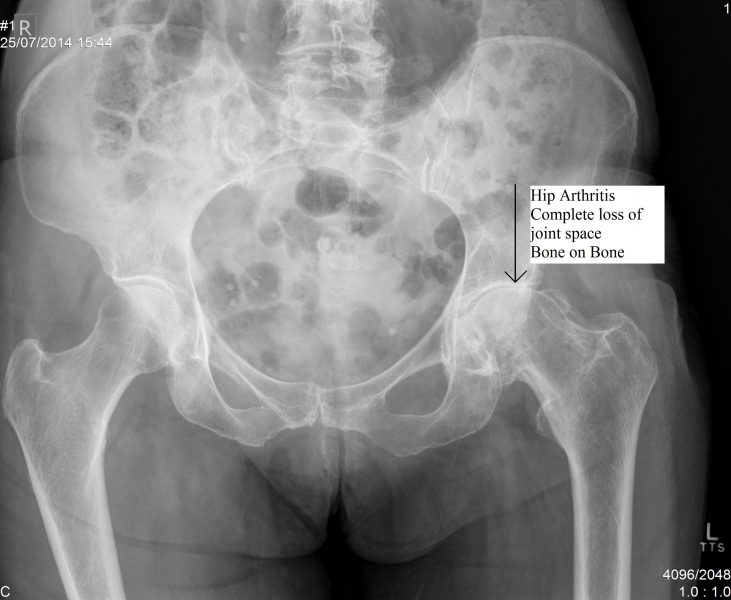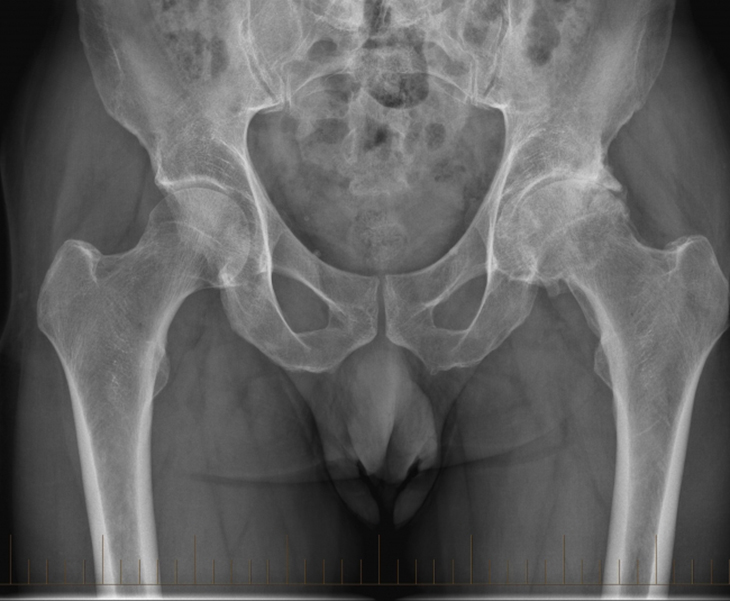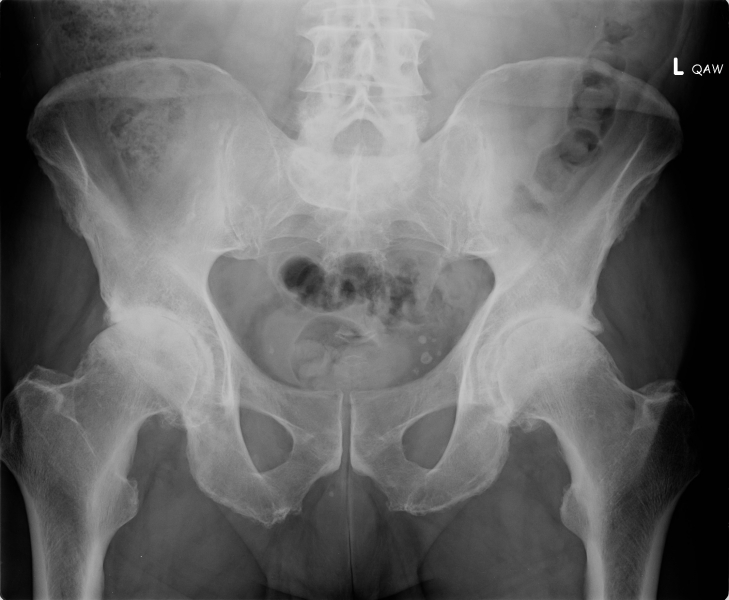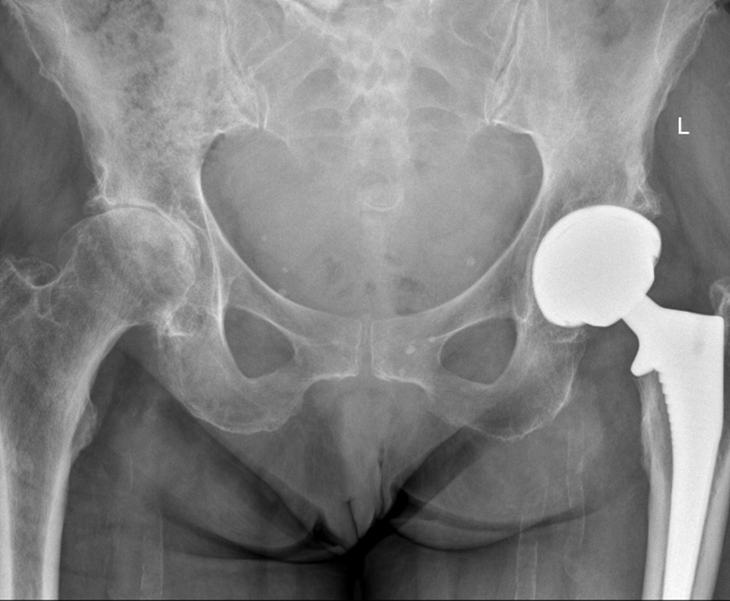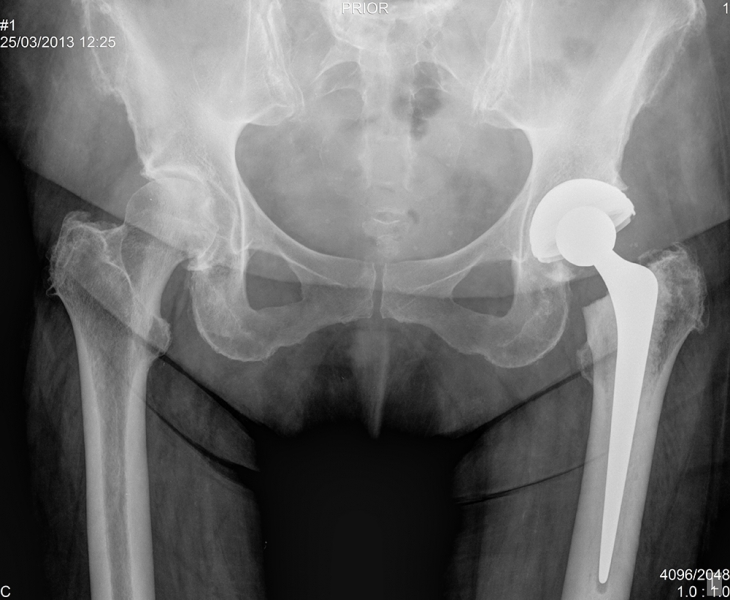A hip replacement is a surgical procedure performed to treat chronic hip pain usually due to arthritis.
Hip arthritis is a condition where the smooth articular cartilage lining of the hip wears away. Eventually this exposes the underlying bone. Hip arthritis is associated with pain (which may be felt in the buttock, groin, thigh or knee), stiffness and limitation of function.
Hip replacement surgery is a safe and reliable procedure usually resulting in relief of hip pain and stiffness with a return to normal function.
Hip replacement is usually long lasting (20+ years).

